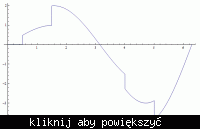stowoda
Newbie
Hi there.
I havent work with DSP´s yet and I am wondering about the boundaries
which are given when generating periodical signals with a DSP.
What I know or assume to know is:
- The signal must be represented digitally (inside the DSP)
- It can be fed into the DSP from the outside analogue world via a ADC
- A simple signal form would propably be a sine with parameters like (f,phi,amplitude)
What I would like to know:
- If I am not feeding a analogue signal into the DSP, how could I generate,
for example, a sine. In especially, how would it look like in software?
- I can imagine, that there is a function provided by the compiler that might more or less look like that: Sine(f,phi,Amplitude)
- Can I use mathematical formulas to represent more complex signals?
regards
stowoda
I havent work with DSP´s yet and I am wondering about the boundaries
which are given when generating periodical signals with a DSP.
What I know or assume to know is:
- The signal must be represented digitally (inside the DSP)
- It can be fed into the DSP from the outside analogue world via a ADC
- A simple signal form would propably be a sine with parameters like (f,phi,amplitude)
What I would like to know:
- If I am not feeding a analogue signal into the DSP, how could I generate,
for example, a sine. In especially, how would it look like in software?
- I can imagine, that there is a function provided by the compiler that might more or less look like that: Sine(f,phi,Amplitude)
- Can I use mathematical formulas to represent more complex signals?
regards
stowoda
